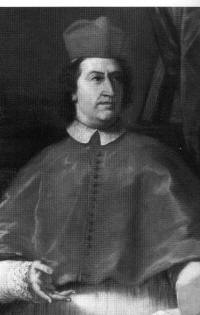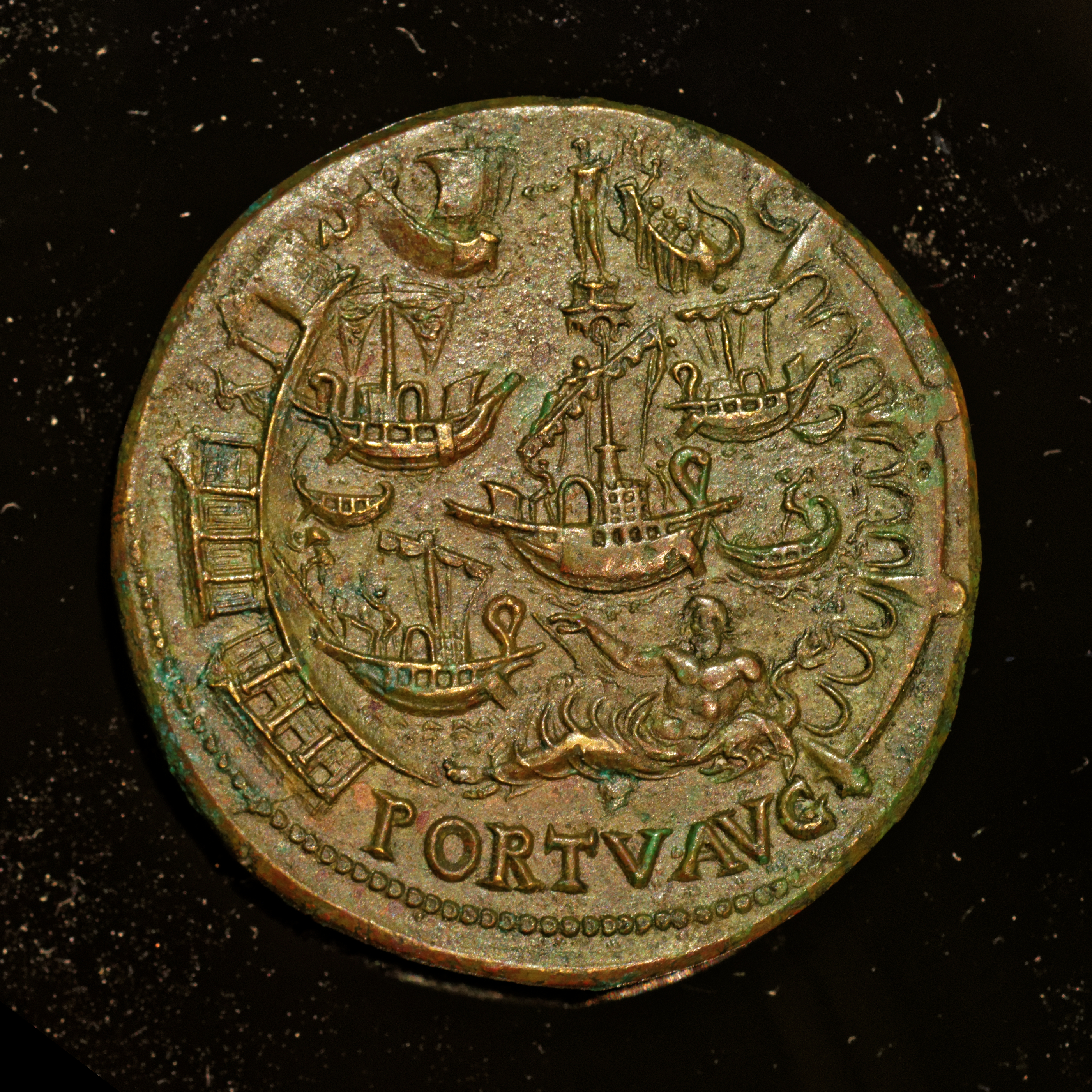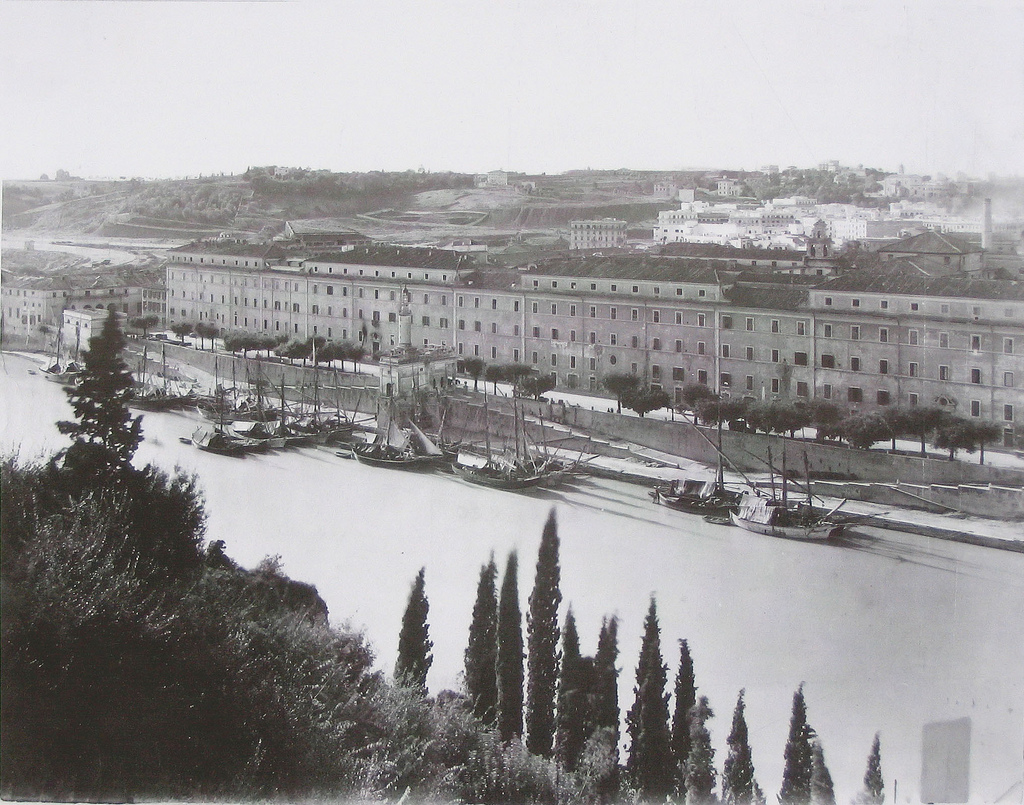|
Porta Portese
Porta Portese is an ancient city gate, located at the end of Via Portuense, where it meets Via Porta Portese, about a block from the banks of the Tiber on the southern edge of the Rione Trastevere of Rome, Italy. History The gate was built in 1644 as part of the Janiculum Walls which replaced the Porta Portuensis. The gate and walls were built by Vincenzo Maculani; and commissioned by Pope Urban VIII. by (2009, Library) Just outside ... [...More Info...] [...Related Items...] OR: [Wikipedia] [Google] [Baidu] |
City Gate
A city gate is a gate which is, or was, set within a city wall. It is a type of fortified gateway. Uses City gates were traditionally built to provide a point of controlled access to and departure from a walled city for people, vehicles, goods and animals. Depending on their historical context they filled functions relating to defense, security, health, trade, taxation, and representation, and were correspondingly staffed by military or municipal authorities. The city gate was also commonly used to display diverse kinds of public information such as announcements, tax and toll schedules, standards of local measures, and legal texts. It could be heavily fortified, ornamented with Escutcheon (heraldry), heraldic shields, sculpture or inscriptions, or used as a location for warning or intimidation, for example by displaying the heads of Capital punishment, beheaded criminals or public enemies. Notably in Denmark, many market towns used to have at least one city gate mostly as part ... [...More Info...] [...Related Items...] OR: [Wikipedia] [Google] [Baidu] |
Clement XI
Pope Clement XI (; ; ; 23 July 1649 – 19 March 1721), born Giovanni Francesco Albani, was head of the Catholic Church and ruler of the Papal States from 23 November 1700 to his death in March 1721. Clement XI was a patron of the arts and of science. He was also a great benefactor of the Vatican Library; his interest in archaeology is credited with saving much of Rome's antiquity. He authorized expeditions which succeeded in rediscovering various ancient Christian writings and authorized excavations of the Roman catacombs. Biography Early life Giovanni Francesco Albani was born in 1649 in Urbino to the Albani family, a distinguished family of Albanian origin in central Italy. His mother Elena Mosca (1630–1698) was a high-standing Italian of bergamasque origin, descended from the noble Mosca family of Pesaro. His father Carlo Albani (1623–1684) was a patrician. His mother descended in part from the Staccoli family, who were patricians of Urbino, in part from the Gior ... [...More Info...] [...Related Items...] OR: [Wikipedia] [Google] [Baidu] |
Rome R
Rome (Italian language, Italian and , ) is the capital city and most populated (municipality) of Italy. It is also the administrative centre of the Lazio Regions of Italy, region and of the Metropolitan City of Rome. A special named with 2,746,984 residents in , Rome is the list of cities in the European Union by population within city limits, third most populous city in the European Union by population within city limits. The Metropolitan City of Rome Capital, with a population of 4,223,885 residents, is the most populous metropolitan cities of Italy, metropolitan city in Italy. Rome metropolitan area, Its metropolitan area is the third-most populous within Italy. Rome is located in the central-western portion of the Italian Peninsula, within Lazio (Latium), along the shores of the Tiber Valley. Vatican City (the smallest country in the world and headquarters of the worldwide Catholic Church under the governance of the Holy See) is an independent country inside the city boun ... [...More Info...] [...Related Items...] OR: [Wikipedia] [Google] [Baidu] |
Gates Of Rome
Gates is the plural of gate, a point of entry to a space which is enclosed by walls. It may also refer to: People * Gates (surname), various people with the last name * Gates Brown (1939-2013), American Major League Baseball player * Gates McFadden (born 1949), American actress and choreographer * Gates P. Thruston (1835-1912), American Civil War veteran, lawyer and businessman Places Canada * Gates, British Columbia, Canada, a rural community ** Gates River, a river in British Columbia ** Gates Valley, a valley in British Columbia ** Gates Lake, at the head of the Gates River United States * Gates, Nebraska, an unincorporated community * Gates, New York, a town ** Gates (CDP), New York, census-designated place * Gates, Oregon, a city * Gates, Tennessee, a town * Gates County, North Carolina, United States ** Gates, North Carolina, an unincorporated community in the county * Gates Pass, Arizona, a mountain pass Arts and entertainment * Gates (band), a post rock band from ... [...More Info...] [...Related Items...] OR: [Wikipedia] [Google] [Baidu] |
Porta San Pancrazio
Porta San Pancrazio is one of the southern gates of the Aurelian walls in Rome, Italy. The gate houses the National Association of Garibaldi Veterans and Survivors along with the Garibaldi Museum (also dedicated to the Italian Partisan Division "Garibaldi", operating between 1943 and 1945). History The gate rises close to the summit of the Janiculum hill and its first building could date back to the end of the Roman Republic, when a humble housing cluster on the right bank of the Tiber was surrounded by a little urban wall. It later marked the southern vertex of the stretch of the wall, built in 270 by Emperor Aurelian, that climbed the hill with a triangle-shaped layout. One of the relevant characteristics of the 14th Region, where the gate rose, was that Via Aurelia ''vetus'' passed through it: the street started from Pons Aemilius, climbed the hill and exited from the town just through the gate, that took its name from the street (even now, the present Via Aurelia Antica, ... [...More Info...] [...Related Items...] OR: [Wikipedia] [Google] [Baidu] |
Porta Del Popolo
The Porta del Popolo, or Porta Flaminia, is a city gate of the Aurelian Walls of Rome that marks the border between Piazza del Popolo and Piazzale Flaminio. History The previous name was ''Porta Flaminia'', because the consular Via Flaminia passed, as it passes even now, through it (in ancient times, ''Via Flaminia'' started at the Porta Fontinalis, close to the current Vittoriano). In the 10th century the gate was named ''Porta San Valentino'', due to the basilica and the catacomb with the same name, rising at the beginning of Viale Pilsudski. Porta del Popolo is a gate of the Aurelian Walls in Rome (Italy). The current Porta del Popolo was built by Pope Sixtus IV for the Jubilee Year 1475 on the site of an ancient Roman gate which, at that time, was partially buried. The origin of the present name of the gate, as well as of the piazza that it overlooks, is not clear: it has been supposed that it could derive from the many poplars (Latin: ''populus'') covering the area, b ... [...More Info...] [...Related Items...] OR: [Wikipedia] [Google] [Baidu] |
Papal Navy
The Papal Navy (, "Pontifical Navy"; ) was the navy, maritime force of the Papal States. Loosely constituted, it was sporadically extant from approximately the Battle of Ostia (849) during the pontificate of Pope Leo IV, Leo IV until the ascension of Pope Leo XIII in 1878 (though the Navy had ceased all operations in 1870), when he sold the last remaining Papal warship, the Papal corvette Immacolata Concezione, ''Immacolata Concezione''. The Papal Navy was separate from the Papal States#Papal military, Papal Army, a varying combination of Military volunteer, volunteers, mercenary, mercenaries, and Catholic Military order (religious society), military orders, disbanded in 1870. The modern Vatican City State does not maintain any formal naval or maritime forces and does not include any significant bodies of water. History Birth Originally protected by the Byzantine navy, the Papal States found itself in need of a naval force of its own following a Islam in Italy#Emirates in Apulia, ... [...More Info...] [...Related Items...] OR: [Wikipedia] [Google] [Baidu] |
Flea Market
A flea market (or swap meet) is a type of street market that provides space for vendors to sell previously owned (secondhand) goods. This type of market is often seasonal. However, in recent years there has been the development of 'formal' and 'casual' markets which divides a fixed-style market (formal) with long-term leases and a seasonal-style market with short-term leases. Consistently, there tends to be an emphasis on sustainable consumption whereby items such as used goods, collectibles, antiques and vintage clothing can be purchased, in an effort to combat climate change and fast fashion. Flea market vending is distinguished from street vending in that the market alone, and not any other public attraction, brings in buyers. There are a variety of vendors: some part-time who consider their work at flea markets a hobby due to their possession of an alternative job; full-time vendors who dedicate all their time to their stalls and collection of merchandise and rely ... [...More Info...] [...Related Items...] OR: [Wikipedia] [Google] [Baidu] |
Portus
Portus was a large artificial harbour of Ancient Rome located at the mouth of the Tiber on the Tyrrhenian Sea. It was established by Claudius and enlarged by Trajan to supplement the nearby port of Ostia. The archaeological remains of Portus are near the modern-day village of Porto within the ''comune'' of Fiumicino, Lazio, just southwest of Rome. Ancient Portus Claudian phase Ancient Rome's original port was Ostia located at the mouth of the Tiber on the Tyrrhenian Sea. The Tiber splits into two streams at its mouth, roughly 1 mile before reaching the Tyrrhenian, with Ostia situated on the larger southern stream. Emperor Claudius constructed the first harbour on the Portus site, north of Ostia, enclosing an area of 250 hectares (617 acres), with two long curving moles projecting into the sea, and an artificial island, bearing a lighthouse, in the centre of the space between them. The foundation of this lighthouse was provided by filling one of the massive obelisk ships ... [...More Info...] [...Related Items...] OR: [Wikipedia] [Google] [Baidu] |
Via Portuensis
The Via Portuensis was an ancient Roman road, leading to the Portus constructed by Claudius on the right bank of the Tiber, at its mouth. It started from the Pons Aemilius, and the first part of its course is identical with that of the Via Campana. The Porta Portuensis of the Aurelian Walls had a double arch, probably owing to the amount of traffic it had to carry, but the divergence occurred a good deal further on, probably a mile from the gate. The Via Portuensis went to the right into hilly country, while the Via Campana kept to the valley of the Tiber. The roads rejoined at the modern Ponte Galeria. With the growth of importance of the Via Portuensis from the time of Constantine onwards, that of the Via Ostiensis correspondingly decreased. Procopius, who describes how barges were dragged up the river by teams of oxen moving along it, must be describing the towpath, and not either the Via Portuensis or even the Via Campana, which is in many places at quite a considerable d ... [...More Info...] [...Related Items...] OR: [Wikipedia] [Google] [Baidu] |
Ripa Grande
Porto di Ripa Grande was the river port of Rome, just downstream the former ''Pons Sublicius'', where the wares, going up and down the Tiber towards the dock of Fiumicino, were handled. The building of the ''muraglioni'' (massive walls) has erased its existence and function, just keeping a trace in the toponymy (the stretch of Lungotevere, that flanks San Michele a Ripa Grande, is called ''Porto di Ripa Grande'', while ''Via del Porto'' is the narrow street that links the Tiber to Santa Cecilia in Trastevere and Santa Maria dell'Orto) and in the two ramps giving access to the quay of the river. The port During the Roman era, the maritime harbour of Rome was Ostia. From there, the wares destined to the town were transported up the Tiber, along which several docks, with specific functions, were placed. The general river '' emporium'' rose on the left bank of the river, starting from the present Rione Testaccio - where remains of the '' Porticus Aemilia'' and of the '' emporium ... [...More Info...] [...Related Items...] OR: [Wikipedia] [Google] [Baidu] |
Arsenal
An arsenal is a place where arms and ammunition are made, maintained and repaired, stored, or issued, in any combination, whether privately or publicly owned. Arsenal and armoury (British English) or armory (American English) are mostly regarded as synonyms, although subtle differences in usage exist. A sub-armory is a place of temporary storage or carrying of weapons and ammunition, such as any temporary post or patrol vehicle that is only operational in certain times of the day. Etymology The term in English entered the language in the 16th century as a loanword from , itself deriving from the term , which in turn is thought to be a corruption of , , meaning "manufacturing shop". Types A lower-class arsenal, which can furnish the materiel and equipment of a small army, may contain a laboratory, gun and carriage factories, small-arms ammunition, small-arms, harness, saddlery tent and powder factories; in addition, it must possess great storehouses. In a second-class a ... [...More Info...] [...Related Items...] OR: [Wikipedia] [Google] [Baidu] |





